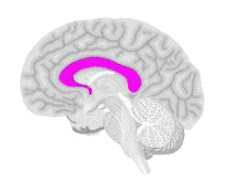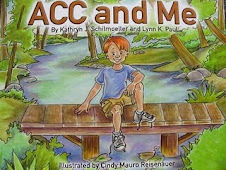
"Today you are You, that is truer
than true. There is no one alive
who is Youer than You."
~Dr. Seuss
Each one of us is unique.
We are each individuals with
distinct interests, abilities,
personalities and peculiarities.
And yet it seems that too often
we expect or assume that each
person will learn in a one size
fits all sort of way.
When I was in school I turned my
paper sideways when I wrote. I am
right handed. I could print and
write cursive very well this way and
yet teachers would continuously turn
my paper back to a vertical (up-down)
direction. I could not write as well
this way. It felt awkward to me and
my penmanship was not as good. I would
turn my paper sideways to the left and
begin writing again. As an adult, I
continue to write using this same style.
The unique and individual learning
styles of each person (and the way we
do the things we do) is important
and should always be recognized,
supported, celebrated and encouraged.
When a person is born missing a body
part that you are able to visibly see
such as a missing arm or arms, a missing
leg or legs, missing fingers/hands they
learn to compensate and use their body
in different ways to accomplish certain
tasks and daily skills.
And yet when a child is born missing their
corpus callosum, the middle section
of their brain, a body part that is not
visibly seen by others it becomes more
difficult for people to understand
why the child or adult does something
the way they do it.
To me, it is the same thing as the person
who is visibly missing a body part. Each
person is compensating for the part that
is missing and finding another way to do
a specific task or accomplish what they
need or want to do.
For example: My son, Matthew, who is
completely missing his corpus callosum,
loves spinner tops. Spinners are a
favorite toy of his and have been for
many years. When he was younger I
tried and tried to teach him to spin
the spinners the way I do it...by
holding the tiny wooden peg in the
middle with your thumb and forefinger
then twisting. It didn't work for him.
It was not Matthew's way to spin the
top. In time, through his own
determination and his own discovery
(by using the first three fingertips of
his right hand and placing them on top
of the flat wooden spinner top then
moving his fingertips in one quick
motion) he learned to spin the top.

I say poe-tay-toe and he says poe-tot-oh
but we both spin the spinner top.
He isn't able to spin the top my way
and I have tried and tried to spin
the top as fast and as good as he can
using his way but I am not able to.
One of the many things that I have
learned from my own child, Matthew,
who has Agenesis of the Corpus Callosum
is that he leads the way when it comes
to his learning style and needs. I
must be a careful observer and be ready
at any time to take a detour and go in
another direction whenever necessary. I am
always thinking about how I can teach
him something and what method will work
based upon his signals, motivations and
cues.

Sometimes Matthew learns through a method
I choose to teach him and other times he
learns something that is one of his goals
by a completely different method that we
just stumble upon.
For example, Matthew loves using the computer.
We have a goal for him to learn how to under-
stand and properly use "yes" and "no" when
asked a question. I have tried to help him
reach this goal through the use of his
communication device in various ways (since
he is non-verbal) but I put it on the back-
burner because he has so many goals and this
particular goal was stumping me with respect
to HOW to try to help him learn "Yes" and "No".
Then when we discovered the Living Books
interactive animated story CD roms
(something Matthew loves using) I realized
that through LOTS of repetition in the
storybook game he began to understand the
concept of yes and no because each time I
tell Matthew it's time to stop the storybook
game he clicks on "QUIT" and sees a screen
with a "YES" and "NO" and then hears the message:
"Are you sure you want to quit?" Then he has
two choices to make..."YES" and "NO".
"YES" is written underneath a cute picture
that is different on each game. Sometimes it's
a fish and the fish will be shaking it's head
up and down for "YES" and the "NO" will have
another animal shaking it's head side-to-side
for "NO". This was the magic and miraculous
method to help teach Matthew "YES" and "NO"
and there couldn't be a better way for him.
In fact, he so clearly understands now what
"Yes" and "No" means that when he hears the
message on the game that says: "Are you sure
you want to quit?" he sneakily moves his mouse
over to the "NO" because he doesn't want to
quit even though Mom says it's time to quit.
He's learning what yes and no means and it's
even carrying over into other daily activities
such as Matthew shaking his head up and down
now for yes when I ask him a question.
It's wonderful!

Be respectful of the child's unique abilities
and be a careful observer of the child
in all they do, their motivations, what is
comfortable for them, and then nurture those
things within the child. If possible try to
blend them into something that may allow
that child to gain positive improvement in
a certain area or task without asking the
child to completely eliminate their own natural,
rhythmic, comfortable ways and abilities that
flow from within.
Celebrate the uniqueness in your child
today and let them be the guide to open
the door into their wonderful world of
learning.














































































